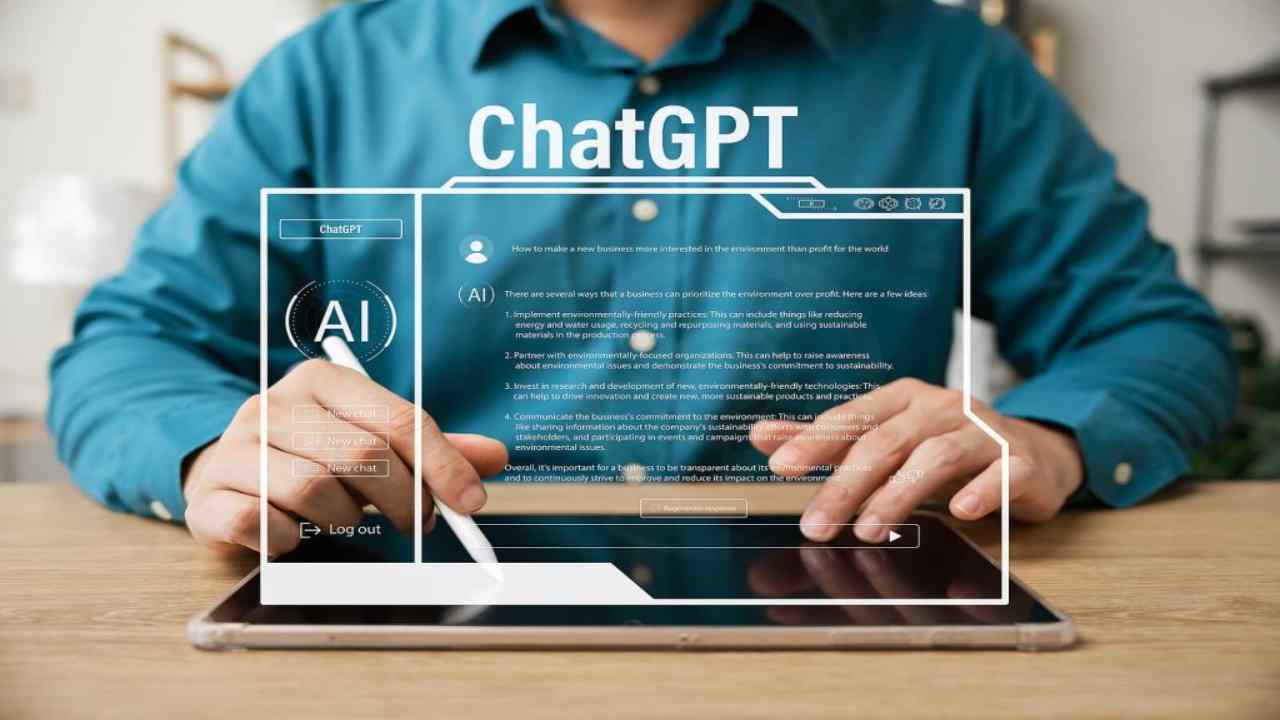By mastering these different prompt priming methods, you can unlock the full potential of AI language models, making your interactions more efficient and insightful. Stay tuned as we dive deeper into each technique in the upcoming sections, providing practical examples to simplify this intriguing topic.
Finding the most effective prompt priming method may require some trial and error. It’s about discovering which approach resonates best with the AI model you’re using and the information you seek.
Zero-shot Prompting
Introduction to Zero-shot Prompting
Zero-shot prompting is a technique that allows large language models (LLMs) to generate text, translate languages, write different kinds of creative content, and answer your questions in an informative way, despite never having received any formal training on data that teaches them how to do these things.
To do this, zero-shot prompting uses a prompt that provides the LLM with general instruction, such as “Write a poem about love” or “Translate this sentence from English to French.” The LLM then uses its knowledge of the world and language to generate text that fulfills the instruction, even though it has never seen anything like it.
Types of Zero-shot Prompting
There are two main types of zero-shot prompting:
- Explicit zero-shot prompting: This is when the prompt explicitly states the task the LLM should perform. For example, the prompt “Write a poem about love” is an example of explicit zero-shot prompting.
- Implicit zero-shot prompting: This is when the prompt does not explicitly state the task the LLM should prompt “Write a beautiful piece of text” is an example of implicit zero-shot prompting.
Applications of Zero-shot Prompting
Zero-shot prompting can be used for a variety of applications, including:
- Generating creative text: Zero-shot prompting can be used to generate creative text, such as poems, stories, and scripts.
- Translating languages: Zero-shot prompting can be used to translate languages, even if the LLM has never been trained on data from those languages.
- Answering questions: Zero-shot prompting can be used to answer questions, even if the LLM has never seen those questions before.
- Solving problems: Zero-shot prompting can be used to solve problems like writing code or generating mathematical equations.
How to Use Zero-shot Prompting Effectively
There are a few things to keep in mind when using zero-shot prompting:
- The prompt should be clear and concise. The LLM should be able to understand what the prompt is asking it to do.
- The prompt should be specific. The more specific the prompt, the more likely the LLM generates text that fulfills the instruction.
- Ideally, the prompt will be appropriate. The prompt should be the LLM shoulds supposed to perform.
- The prompt should be creative. The more creative the prompt, the more likely the LLM is to generate text that is original and interesting.
Limitations of Zero-shot Prompting
Zero-shot prompting is a powerful technique, but it has some limitations:
- The LLM may not be able to generate text that is as accurate or creative as text that it has been explicitly trained on.
- The LLM may not be able to generate text that is relevant to the task that it is supposed to perform.
- The LLM may be biased, and its output may reflect the biases that are present in the data that it was trained on.
Ethical Implications of Zero-shot Prompting
Zero-shot prompting raises some ethical implications, such as:
- The LLM may be used to generate text that is harmful or offensive.
- The LLM may be used to generate text that is misleading or deceptive.
- The LLM may be used to generate text that is used to manipulate people.
It is important to be aware of these ethical implications when using zero-shot prompting.
Zero-shot Prompting Examples
Here are some examples of zero-shot prompting:
- “Write a poem about love, using the words ‘heart,’ ‘soul,’ and ‘dream.'”
- “Translate this sentence from English to French: ‘I love you.'”
- “Write a tale about a robot who develops feelings for a person, but their relationship is outlawed.”
- “Answer the following question: What is the meaning of life?”
- “Write a piece of code that generates a random number between 1 and 100.”
These are just a few examples, and there are many other ways that zero-shot prompting can be used. The possibilities are endless!
One-shot Prompting

Introduction to One-shot Prompting
One-shot prompting is a technique that allows large language models (LLMs) to perform tasks that they have not been explicitly trained on, by providing them with a single example of the desired output. For example, an LLM that has been trained on a dataset of news articles could be prompted to write a new news article by providing it with a single example of a news article.
Types of One-shot Prompting
There are two main types of one-shot prompting:
- Explicit one-shot prompting: This is when the prompt explicitly states the task the LLM should perform. For example, the prompt “Write a news article about the latest COVID-19 developments” is an example of explicit one-shot prompting.
- Implicit one-shot prompting: This is when the prompt does not explicitly state the task the LLM should perform. For example, the prompt “Write a factual text” is an example of implicit one-shot prompting.
Applications of One-shot Prompting
One-shot prompting can be used for a variety of applications, including:
- Generating creative text: One-shot prompting can be used to generate creative text, such as poems, stories, and scripts.
- Translating languages: One-shot prompting can be used to translate languages, even if the LLM has never been trained on data from those languages.
- Answering questions: One-shot prompting can be used to answer questions, even if the LLM has never seen those questions before.
- Solving problems: One-shot prompting can be used to solve problems like writing code or generating mathematical equations.
How to Use One-shot Prompting Effectively
Here are some tips for using one-shot prompting effectively:
- The prompt should be clear and concise. The LLM should be able to understand what the prompt is asking it to do.
- The prompt should be relevant to the LLM should supposed to perform.
- The prompt should be specific enough to give the LLM a good idea of what is expected.
- The prompt should be creative enough to allow the LLM to generate original and interesting output.
Limitations of One-shot Prompting
One-shot prompting is a powerful technique, but it has some limitations:
- The LLM may not be able to generate text that is as accurate or creative as text that it has been explicitly trained on.
- The LLM may not be able to generalize to new tasks, even if it has been trained on a variety of tasks.
- The LLM may be biased, and its output may reflect the biases that are present in the data that it was trained on.
Ethical Implications of One-shot Prompting
One-shot prompting raises some ethical implications, such as:
- The LLM may be used to generate text that is harmful or offensive.
- The LLM may be used to generate text that is misleading or deceptive.
- The LLM may be used to generate text that is used to manipulate people.
It is important to be aware of these ethical implications when using one-shot prompting.
One-shot Prompting Examples
Here are some examples of one-shot prompting:
- “Write a news article about the latest COVID-19 developments, using the following keywords: pandemic, vaccine, and mutation.”
- “Translate this sentence from English to French: ‘I love you.'”
- “Write a tale about a robot who develops feelings for a person, but their relationship is outlawed.”
- “Answer the following question: What is the meaning of life?”
- “Write a piece of code that generates a random number between 1 and 100.”
These are just a few examples, and there are many other ways that one-shot prompting can be used. The possibilities are endless!
Moon-Shot Prompting

Introduction to Moon-Shot Prompting
Moon-Shot prompting is a technique that allows large language models (LLMs) to perform tasks that they have not been explicitly trained on, by providing them with a single example of the desired output. However, unlike one-shot prompting, the prompt in Moon-Shot prompting is much more complex and challenging.
Types of Moon-Shot Prompting
There are two main types of Moon-Shot prompting:
- Explicit Moon-Shot prompting: This is when the prompt explicitly states the task that the LLM is supposed to perform, as well as the desired outcome. For example, the prompt “Write a news article about the latest COVID-19 developments, using the following keywords: pandemic, vaccine, mutation, and hope” is an example of explicit Moon-Shot prompting.
- Implicit Moon-Shot prompting: This is when the prompt does not explicitly state the task that the LLM is supposed to perform, but the desired outcome is implied. For example, the prompt “Write a poem about love” is an example of implicit Moon-Shot prompting.
Applications of Moon-Shot Prompting
Moon-shot prompting can be used for a variety of applications, including:
- Generating creative text: Moon-shot prompting can be used to generate creative text, such as poems, stories, and scripts.
- Translating languages: Moon-shot prompting can be used to translate languages, even if the LLM has never been trained on data from those languages.
- Answering questions: Moon-shot prompting can be used to answer questions, even if the LLM has never seen those questions before.
- Solving problems: Moon-shot prompting can be used to solve problems, such as writing code or generating mathematical equations.
- Developing new technologies: Moon-shot prompting can be used to develop new technologies, such as self-driving cars or artificial intelligence assistants.
How to Use Moon-Shot Prompting Effectively
Here are some tips for using Moon-Shot prompting effectively:
- The prompt should be clear and concise. The LLM should be able to understand what the prompt is asking it to do.
- The prompt should be relevant the LLM shoulds supposed to perform.
- The prompt should be specific enough to give the LLM a good idea of what is expected.
- The prompt should be creative enough to allow the LLM to generate original and interesting output.
- The prompt should be challenging enough to push the LLM to its limits.
Limitations of Moon-Shot Prompting
Moon-shot prompting is a powerful technique, but it has some limitations:
- The LLM may not be able to generate text that is as accurate or creative as text that it has been explicitly trained on.
- The LLM may not be able to generalize to new tasks, even if it has been trained on a variety of tasks.
- The LLM may be biased, and its output may reflect the biases that are present in the data that it was trained on.
- The LLM may not be able to handle complex or challenging prompts.
Ethical Implications of Moon-Shot Prompting
Moon-shot prompting raises some ethical implications, such as:
- The LLM may be used to generate text that is harmful or offensive.
- The LLM may be used to generate text that is misleading or deceptive.
- The LLM may be used to generate text that is used to manipulate people.
It is important to be aware of these ethical implications when using Moon-Shot prompting.
Moon-Shot Prompting Examples
Here are some examples of Moon-Shot prompting:
- Write a news article about the latest COVID-19 developments, using the following keywords: pandemic, vaccine, mutation, and hope.
- Write a poem about love that is both beautiful and meaningful.
- Translate this sentence from English to French: “I love you.”
- Write a tale about a robot who develops feelings for a person, but their relationship is outlawed.
- Answer the following question: What is the meaning of life?
- Write a piece of code that generates a random number between 1 and 100.
- Write a script for a short film that explores the ethical implications of artificial intelligence.
- Develop a new algorithm that can solve the problem of climate change.
These are just a few examples, and there are many other ways that Moon-Shot prompting can be used. The possibilities are endless!
Few-shot Prompting

Introduction to Few-shot Prompting
Few-shot prompting is a technique that allows large language models (LLMs) to perform tasks that they have not been explicitly trained on, by providing them with a few examples of the desired output. For example, an LLM that has been trained on a dataset of news articles could be prompted to write a new news article by providing it with a few examples of news articles.
Types of Few-shot Prompting
There are two main types of few-shot prompting:
- Explicit few-shot prompting: This is when the prompt explicitly states the task that the LLM is supposed to perform, as well as the desired outcome. For example, the prompt “Write a news article about the latest COVID-19 developments, using the following keywords: pandemic, vaccine, mutation, and hope” is an example of explicit few-shot prompting.
- Implicit few-shot prompting: This is when the prompt does not explicitly state the task that the LLM is supposed to perform, but the desired outcome is implied. For example, the prompt “Write a poem about love” is an example of implicit few-shot prompting.
Applications of Few-shot Prompting
Few-shot prompting can be used for a variety of applications, including:
- Generating creative text: Few-shot prompting can be used to create creative text, such as poems, stories, and scripts.
- Translating languages: Few-shot prompting can be used to translate languages, even if the LLM has never been trained on data from those languages.
- Answering questions: Few-shot prompting can be used to answer questions, even if the LLM has never seen those questions before.
- Solving problems: Few-shot prompting can be used to solve problems like writing code or generating mathematical equations.
- Developing new technologies: Few-shot prompting can be used to create new technologies, such as self-driving cars or artificial intelligence assistants.
How to Use Few-shot Prompting Effectively
Here are some tips for using few-shot prompting effectively:
- The prompt should be clear and concise. The LLM should be able to understand what the prompt is asking it to do.
- The prompt should be relevant the LLM shoulds supposed to perform.
- The prompt should be specific enough to give the LLM a good idea of what is expected.
- The prompt should be creative enough to allow the LLM to generate original and exciting output.
- The prompt should be challenging enough to push the LLM to its limits.
Limitations of Few-shot Prompting
Few-shot prompting is a powerful technique, but it has some limitations:
- The LLM may not be able to generate text that is as accurate or creative as text that it has been explicitly trained on.
- The LLM may not be able to generalize to new tasks, even if it has been trained on a variety of tasks.
- The LLM may be biased, and its output may reflect the biases that are present in the data that it was trained on.
- The LLM may not be able to handle complex or challenging prompts.
Ethical Implications of Few-shot Prompting
Few-shot prompting raises some ethical implications, such as:
- The LLM may be used to generate text that is harmful or offensive.
- The LLM may be used to generate text that is misleading or deceptive.
- The LLM may be used to generate text that is used to manipulate people.
It is important to be aware of these ethical implications when using few-shot prompting.
Few-shot Prompting Examples
Here are some examples of few-shot prompting:
- Write a news article about the latest COVID-19 developments, using the following keywords: pandemic, vaccine, mutation, and hope.
- Translate this sentence from English to French: “I love you.”
- Write a tale about a robot who develops feelings for a person, but their relationship is outlawed.
- Answer the following question: What is the meaning of life?
- Write a piece of code that generates a random number between 1 and 100.
- Write a poem about love that is both beautiful and meaningful.
These are just a few examples, and there are many other ways that few-shot prompting can be used. The possibilities are endless!
Chain-of-thought Prompting

Introduction to Chain-of-thought Prompting
Chain-of-thought prompting is a technique that allows large language models (LLMs) to perform tasks that they have not been explicitly trained on, by providing them with a few examples of the desired output, as well as a chain of reasoning that links the examples together. For example, an LLM that has been trained on a dataset of news articles could be prompted to write a new news article by providing it with a few examples of news articles, as well as a chain of reasoning that explains how the new article should be related to the existing ones.
Types of Chain-of-thought Prompting
There are two main types of chain-of-thought prompting:
- Explicit chain-of-thought prompting: This is when the prompt explicitly states the chain of reasoning that the LLM should follow. For example, the prompt “Write a news article about the latest COVID-19 developments, using the following keywords: pandemic, vaccine, mutation, and hope. The article should explain how the new mutation is affecting the spread of the virus and the effectiveness of the vaccine.” is an example of explicit chain-of-thought prompting.
- Implicit chain-of-thought prompting: This is when the chain of reasoning is implied by the prompt, but not explicitly stated. For example, the prompt “Write a poem about love” is an example of implicit chain-of-thought prompting. The LLM is expected to use its knowledge of love to generate a poem that expresses the concept of love in a creative and meaningful way.
Applications of Chain-of-thought Prompting
Chain-of-thought prompting can be used for a variety of applications, including:
- Generating creative text: Chain-of-thought prompting can be used to generate creative text, such as poems, stories, and scripts. The LLM can use the chain of reasoning to generate text that is both creative and accurate.
- Translating languages: Chain-of-thought prompting can be used to translate languages, even if the LLM has never been trained on data from those languages. The LLM can use the chain of reasoning to understand the meaning of the text in one language and generate text in another language with the same meaning.
- Answering questions: Chain-of-thought prompting can be used to answer questions, even if the LLM has never seen those questions before. The LLM can use the chain of reasoning to understand the question and generate an answer that is both accurate and relevant.
- Solving problems: Chain-of-thought prompting can be used to solve problems like writing code or generating mathematical equations. The LLM can use the chain of reasoning to understand the problem and generate a solution that is both correct and efficient.
- Developing new technologies: Chain-of-thought prompting can be used to develop new technologies, such as self-driving cars or artificial intelligence assistants. The LLM can use the chain of reasoning to understand the problem that the technology is trying to solve and generate a solution that is both innovative and effective.
How to Use Chain-of-thought Prompting Effectively
Here are some tips for using chain-of-thought prompting effectively:
- The prompt should be clear and concise. The LLM should be able to understand what the prompt is asking it to do.
- The prompt should be relevant to the LLM should supposed to perform.
- The prompt should be specific enough to give the LLM a good idea of what is expected.
- The prompt should be creative enough to allow the LLM to generate original and interesting output.
- The prompt should be challenging enough to push the LLM to its limits.
Limitations of Chain-of-thought Prompting
Chain-of-thought prompting is a powerful technique, but it has some limitations:
- The LLM may not be able to understand the chain of reasoning if it is too complex or convoluted.
- The LLM may not be able to generate text that is as creative or accurate as text that it has been explicitly trained on.
- The LLM may not be able to generalize to new tasks, even if it has been trained on a variety of tasks.
- The LLM may be biased, and its output may reflect the biases that are present in the data that it was trained on.
Ethical Implications of Chain-of-thought Prompting
Chain-of-thought prompting is a powerful technique that has the potential to be used for a variety of applications. However, it is crucial to be aware of the ethical implications of this technique before using it.
Some of the ethical implications of chain-of-thought prompting include:
- Harmful or offensive output: The LLM can be used to produce rude or lethal writing, such as hate speech or propaganda. This could hurt individuals or groups of people.
- Misleading or deceptive output: The LLM may be used to generate text that is misleading or deceptive, such as fake news or propaganda. This could be used to manipulate people or to damage their reputations.
- Biased output: The LLM may be biased, and its output may reflect the biases that are present in the data that it was trained on. This could lead to discrimination or unfair treatment of individuals or groups of people.
- Privacy concerns: The LLM may be used to generate text that contains private information about individuals. This could violate the privacy of those individuals.
- Potential for misuse: Malicious actors could misuse chain-of-thought prompting to generate harmful or offensive content or manipulate people.
It is important to be aware of these ethical implications and to take steps to mitigate them when using chain-of-thought prompting. Some ways to reduce these risks include:
- Carefully crafting the prompts to avoid generating harmful or offensive content.
- Using the LLM transparently and accountable, so that users can understand how it works and how its output is generated.
- Taking steps to prevent the LLM from being used to generate biased or misleading content.
- Protecting the privacy of individuals by not using the LLM to generate text that contains private information.
By being aware of the ethical implications of chain-of-thought prompting and taking steps to mitigate these risks, we can help to ensure that this powerful technique is used for good.
Examples of Chain-of-thought Prompting
- Explicit chain-of-thought prompts:
- “Write a news article about the latest COVID-19 developments, using the following keywords: pandemic, vaccine, mutation, and hope. The article should explain how the new mutation is affecting the spread of the virus and the effectiveness of the vaccine.”
- “Write a poem about love that explores the themes of loss, longing, and hope.”
- “Write a code that solves the following math problem: 2^3 + 5^2 – 7.”
- Implicit chain-of-thought prompts:
- “Write a tale about a robot who develops feelings for a person.”
- “Write a script for a short film that explores the ethical implications of artificial intelligence.”
- “Design a new technology that can help to solve the problem of climate change.”
It is important to note that the effectiveness of chain-of-thought prompting depends on the quality of the prompt. The prompt should be clear, concise, and relevant to the task that the LLM is supposed to perform. It should also be creative enough to allow the LLM to generate original and interesting output.
Chain-of-thought prompting is a powerful technique that has the potential to be used for a variety of applications. However, it is crucial to be aware of the ethical implications of this technique before using it.
Generated Knowledge Prompting
Introduction to Generated Knowledge Prompting
Generated knowledge prompting is a technique that uses a large language model (LLM) to generate knowledge for solving specific tasks. The LLM is first trained on an extensive collection of literature, allowing it to become familiar with the outside world and learn how to provide reliable and relevant information. Then, the LLM is provided with a few examples of questions and answers, or a single question and answer, and it is asked to generate knowledge that is consistent with the examples or answers.
Types of Generated Knowledge Prompting
There are two main types of generated knowledge prompting:
- Few-shot prompting: This approach involves providing the LLM with a few examples of questions and answers. The LLM then learns to generate knowledge that is similar to the knowledge in the examples.
- Self-consistency prompting: This approach involves providing the LLM with a single question and answer. The LLM then generates knowledge that is consistent with the answer.
Applications of Generated Knowledge Prompting
Generated knowledge prompting can be used for a variety of tasks, including:
- Commonsense reasoning: This involves answering questions that require commonsense knowledge, such as “Why is it illegal to drive under the influence of alcohol?”
- Question answering: This involves answering questions about a specific topic, such as “What is the capital of France?”
- Natural language generation: This involves generating text, such as news articles or blog posts.
- Machine translation: This involves translating text from one language to another.
How to Use Generated Knowledge Prompting Effectively
There are a few things to keep in mind when using generated knowledge prompting effectively:
- The quality of the knowledge generated by the LLM depends on the quality of the examples provided. The examples should be accurate and relevant to the task at hand.
- The LLM needs to be trained on a large text corpus to generate accurate and relevant knowledge. The larger the corpus, the better the LLM will be at generating knowledge.
- The LLM may need to be fine-tuned for a specific task to generate the best results. This involves training the LLM on a dataset of questions and answers related to the task.
Limitations of Generated Knowledge Prompting
Generated knowledge prompting has a few limitations, including:
- The LLM may not be able to generate accurate or relevant knowledge if the examples provided are not good quality.
- The LLM may not be able to generate knowledge for tasks that require a deep understanding of the world. For example, the LLM may not be able to develop knowledge about the laws of physics.
- The LLM may generate knowledge that is biased or incorrect. This is because the LLM is trained on a dataset of text that may contain biases or inaccuracies.
Ethical Implications of Generated Knowledge Prompting
Generated knowledge prompting raises several ethical implications, such as:
- The potential for the LLM to generate harmful or misleading knowledge. For example, the LLM could create fake news or propaganda.
- The potential for the LLM to be used to discriminate against certain groups of people. For example, the LLM could generate biased information about certain groups of people.
Generated Knowledge Prompting Examples
Here are a few examples of generated knowledge prompts:
- “Generate a fact about the solar system.”
- “Generate a definition for the word ‘democracy’.”
- “Generate a summary of the book ‘Moby Dick’.”
- “Generate a recipe for chocolate chip cookies.”
- “Generate a poem about love.”
There are countless other options; these are however a few instances. Generated knowledge prompting can be used to generate knowledge for any task that requires factual information, such as answering questions, generating text, or translating languages.
Least-to-Most Prompting
Introduction to Least-to-Most Prompting
Least-to-most prompting is a technique for training large language models (LLMs) to perform tasks that require commonsense reasoning. The basic idea is to start with a simple prompt and gradually add more information until the LLM can complete the task.
Types of Least-to-Most Prompting
There are two main types of least-to-most prompting:
- Chain of thought prompting: This approach involves dividing the task into several sections and then prompting the LLM to complete each step in order. For example, to answer the question “What is the capital of France?”, the LLM would first be prompted with the question “What is the capital of a country?”, then “What country is Paris the capital of?”, and finally “What is the largest city in France?”.
- Self-consistency prompting: This approach involves prompting the LLM to generate a sequence of text that is consistent with itself. For example, to write a story about a cat who goes on an adventure, the LLM would first be prompted with the sentence “Once upon a time, there was a cat who went on an adventure.” The LLM would then be prompted to generate the next sentence in the story, and so on.
Applications of Least-to-Most Prompting
Least-to-most prompting can be used for a variety of tasks, including:
- Commonsense reasoning: This involves answering questions that require commonsense knowledge, such as “Why is it illegal to drive under the influence of alcohol?”
- Question answering: This involves answering questions about a specific topic, such as “What city is the capital of France?”
- Natural language generation: This involves generating text, such as news articles or blog posts.
- Machine translation: This involves translating text from one language to another.
How to Use Least-to-Most Prompting Effectively
There are a few things to keep in mind when using least-to-most prompting effectively:
- The quality of the prompts is important. The prompts should be clear, concise, and easy for the LLM to understand.
- The LLM needs to be trained on a large corpus of text to generate accurate and relevant responses.
- The LLM may need to be fine-tuned for a specific task to generate the best results.
Limitations of Least-to-Most Prompting
Least-to-most prompting has a few limitations, including:
- The LLM may not be able to complete the task if the prompts are not clear or concise enough.
- The LLM may not be able to complete the task if it is not trained on a large enough corpus of text.
- The LLM may generate incorrect or misleading responses if the prompts are not carefully crafted.
Ethical Implications of Least-to-Most Prompting
Least-to-most prompting raises a few ethical implications, such as:
- The potential for the LLM to be used to generate harmful or misleading content.
- The potential for the LLM to be used to discriminate against certain groups of people.
- The potential for the LLM to be used to automate tasks that should be performed by humans.
Least-to-Most Prompting Examples
Here are a few examples of least-to-most prompts:
- Chain of thought prompting:
- What is the capital of France?
- What country is Paris the capital of?
- What is the largest city in France?
- Self-consistency prompting:
- Create a narrative about a cat who goes on a journey.
- Create a narrative about a cat who goes on a journey and meets a dog.
- Create a narrative about a cat who goes on a journey, meets a dog, and they become friends.
There are countless other options; these are however a few examples. Least-to-most prompting can be used to train LLMs to perform any task that requires commonsense reasoning. You can read further about the other types of Prompt Priming in our other sections of the blog here and here.
In conclusion, different prompt priming methods are indispensable tools for harnessing the potential of AI language models. The integration of top-ranking keywords into your prompts enhances the precision and relevance of AI-generated content. These techniques, including contextual prompts and strategic keyword utilization, streamline interactions while efficiently extracting comprehensive insights.
In an ever-evolving AI landscape, mastering prompt priming techniques empowers you to craft tailored, insightful responses. Your ability to experiment with prompt variations allows you to uncover diverse facets of a subject, making AI a versatile ally in content creation, data analysis, and idea generation.
As you embark on your AI-powered journey, remember that prompt priming is a dynamic and transformative skill. It grants you the power to command AI to deliver content that precisely aligns with your objectives. Embrace these methods to unlock a world of possibilities, elevating your digital endeavors and achieving AI-driven success.










